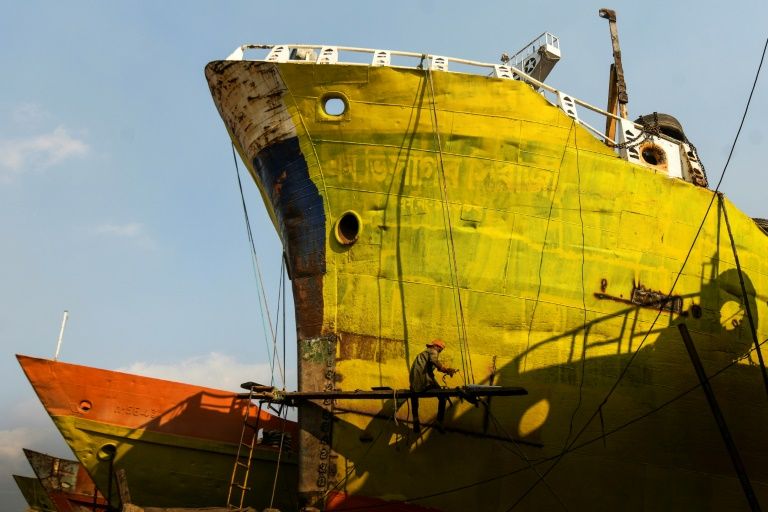Pandemic no setback for Bangladesh’s soaring ship industry
Char Kaliganj (Bangladesh) (AFP) – Work is booming at Bangladesh’s largest shipyard — quite literally. It’s difficult to hear anything over the cacophony of banging hammers and crackling sparks, proof the industry has withstood the economic shockwaves wrought by the coronavirus pandemic.
In this nation of 168 million people, much of the low-lying land is accessed via boat. Rivers are Bangladesh’s lifeblood, and strong economic growth in recent years has fueled more investments in new and bigger ships.
Every corner of the Char Kaliganj yard is filled with vessels under repair, and the air is thick with the acrid smell of oil and chemicals.
“The dockyards were closed in… the coronavirus lockdown. But now business is booming,” worker Abul Kashem, 66, told AFP, saying he has never seen the yard south of Dhaka busier.
The 15,000 workers sometimes toil seven days a week to meet the demand, said Masud Hossain Palash, who heads the Bangladesh Dockyard and Shipyard Owners Association.
“Well into the 1980s, these dockyards would only make… one-storey or one-and-a-half storey wooden ferries,” Kashem recalled. Now their work includes oil tankers and bulk carriers.
The shipyard sector has soared on the back of the strong economy, together with the textile industry which has made Bangladesh the world’s second-largest garment exporter.
Gross domestic product grew by 8.2 percent last year and the hit from the coronavirus pandemic is expected to be less severe than in other developing economies.
Bangladesh’s GDP per capita is also expected to surpass that of its giant neighbour India this year, according to the International Monetary Fund.
But there is a dark side, with campaigners warning of the continued use of child workers and poor labour law enforcement.
Children in the shipyards are paid just a fraction of the wages that adults receive and also face the risk of injury and death, activists said.
Disclaimer: Validity of the above story is for 7 Days from original date of publishing. Source: AFP.


